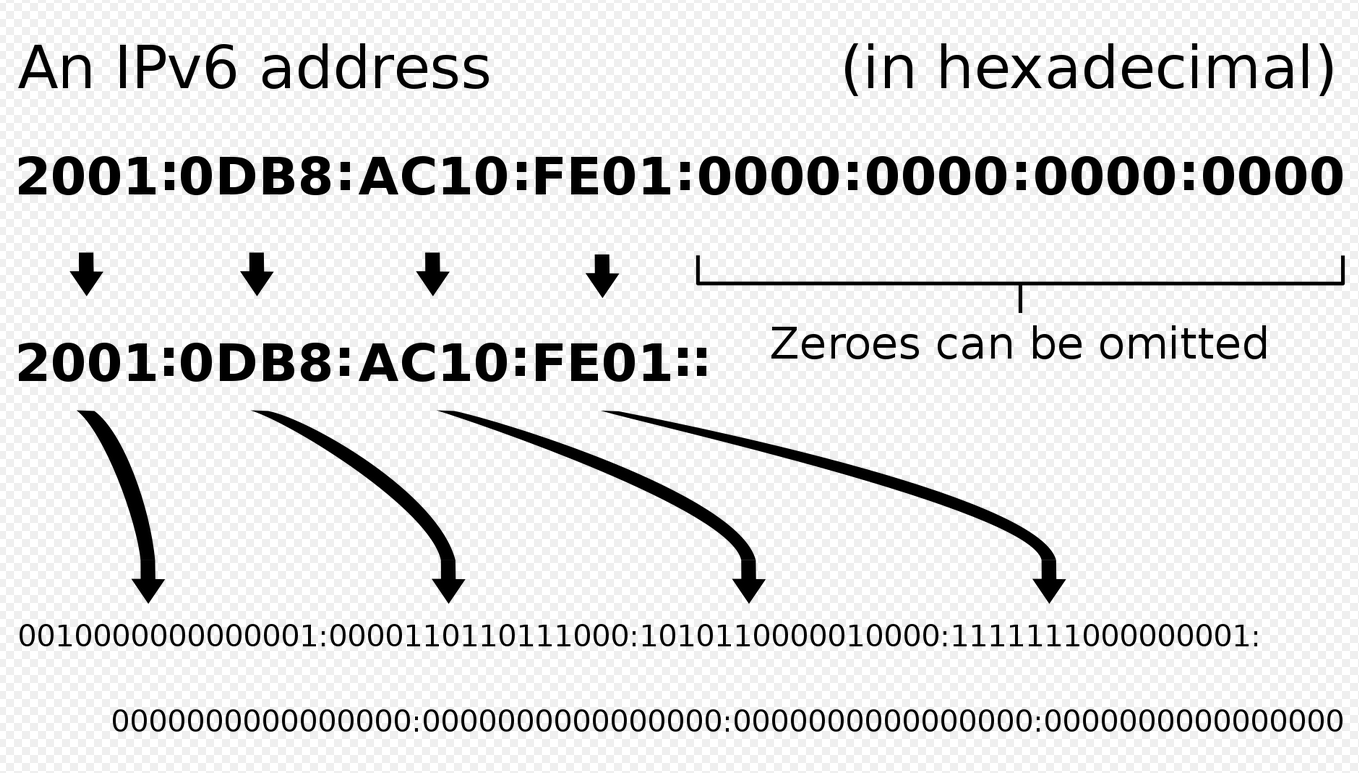An Internet Protocol address (IP address) is a numerical label such as 192.0.2.1 that is connected to a computer network that uses the Internet Protocol for communication. An IP address serves two main functions: network interface identification, and location addressing.
Internet Protocol version 4 (IPv4) defines an IP address as a 32-bit number. However, because of the growth of the Internet and the depletion of available IPv4 addresses, a new version of IP (IPv6), using 128 bits for the IP address, was standardized in 1998. IPv6 deployment has been ongoing since the mid-2000s.
IP addresses are written and displayed in human-readable notations, such as 192.0.2.1 in IPv4, and 2001:db8:0:1234:0:567:8:1 in IPv6. The size of the routing prefix of the address is designated in CIDR notation by suffixing the address with the number of significant bits, e.g., 192.0.2.1/24, which is equivalent to the historically used subnet mask 255.255.255.0.
The IP address space is managed globally by the Internet Assigned Numbers Authority (IANA), and by five regional Internet registries (RIRs) responsible in their designated territories for assignment to local Internet registries, such as Internet service providers (ISPs), and other end users. IPv4 addresses were distributed by IANA to the RIRs in blocks of approximately 16.8 million addresses each, but have been exhausted at the IANA level since 2011. Only one of the RIRs still has a supply for local assignments in Africa.[6] Some IPv4 addresses are reserved for private networks and are not globally unique.
Network administrators assign an IP address to each device connected to a network. Such assignments may be on a static (fixed or permanent) or dynamic basis, depending on network practices and software features.
Function
An IP address serves two principal functions: it identifies the host, or more specifically its network interface, and it provides the location of the host in the network, and thus the capability of establishing a path to that host. Its role has been characterized as follows: “A name indicates what we seek. An address indicates where it is. A route indicates how to get there.” The header of each IP packet contains the IP address of the sending host and that of the destination host.

IPv6 addresses
In IPv6, the address size was increased from 32 bits in IPv4 to 128 bits, thus providing up to 2128 (approximately 3.403×1038) addresses. This is deemed sufficient for the foreseeable future.
The intent of the new design was not to provide just a sufficient quantity of addresses, but also redesign routing in the Internet by allowing more efficient aggregation of subnetwork routing prefixes. This resulted in slower growth of routing tables in routers. The smallest possible individual allocation is a subnet for 264 hosts, which is the square of the size of the entire IPv4 Internet. At these levels, actual address utilization ratios will be small on any IPv6 network segment. The new design also provides the opportunity to separate the addressing infrastructure of a network segment, i.e. the local administration of the segment’s available space, from the addressing prefix used to route traffic to and from external networks. IPv6 has facilities that automatically change the routing prefix of entire networks, should the global connectivity or the routing policy change, without requiring internal redesign or manual renumbering.
The large number of IPv6 addresses allows large blocks to be assigned for specific purposes and, where appropriate, to be aggregated for efficient routing. With a large address space, there is no need to have complex address conservation methods as used in CIDR.
All modern desktop and enterprise server operating systems include native support for IPv6, but it is not yet widely deployed in other devices, such as residential networking routers, voice over IP (VoIP) and multimedia equipment, and some networking hardware.
IPv6 addresses are typically represented as eight groups of four hexadecimal digits, separated by colons. For example:
2001:0db8:85a3:0000:0000:8a2e:0370:7334
IPv6 addresses can also have consecutive groups of zeros compressed using a double colon (::) notation. For instance, the above example can be compressed as:
2001:db8:85a3::8a2e:370:7334
IPv6 adoption is increasing as the number of available IPv4 addresses becomes exhausted due to the proliferation of internet-connected devices. IPv6 provides a much larger address space, enabling the continued growth of the Internet and ensuring that there are enough unique addresses for all devices.